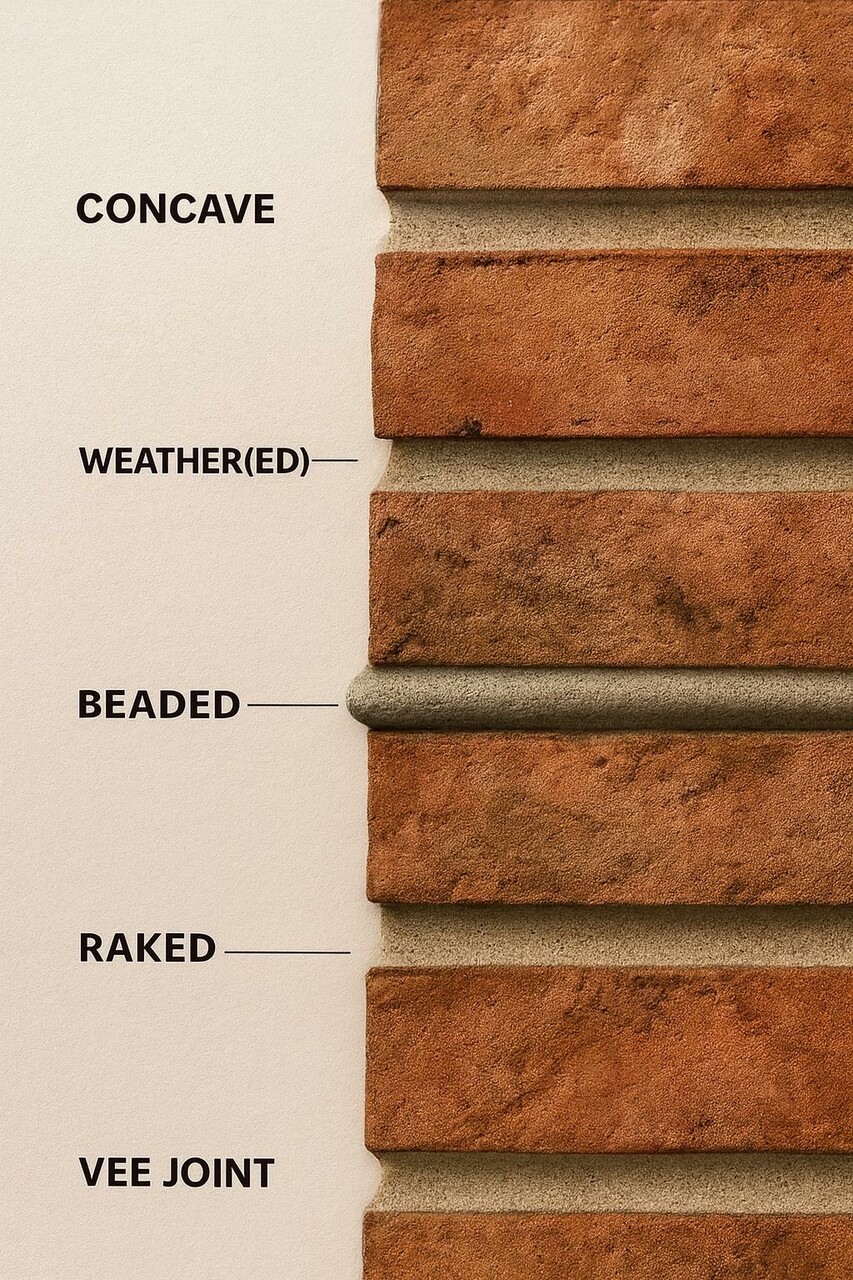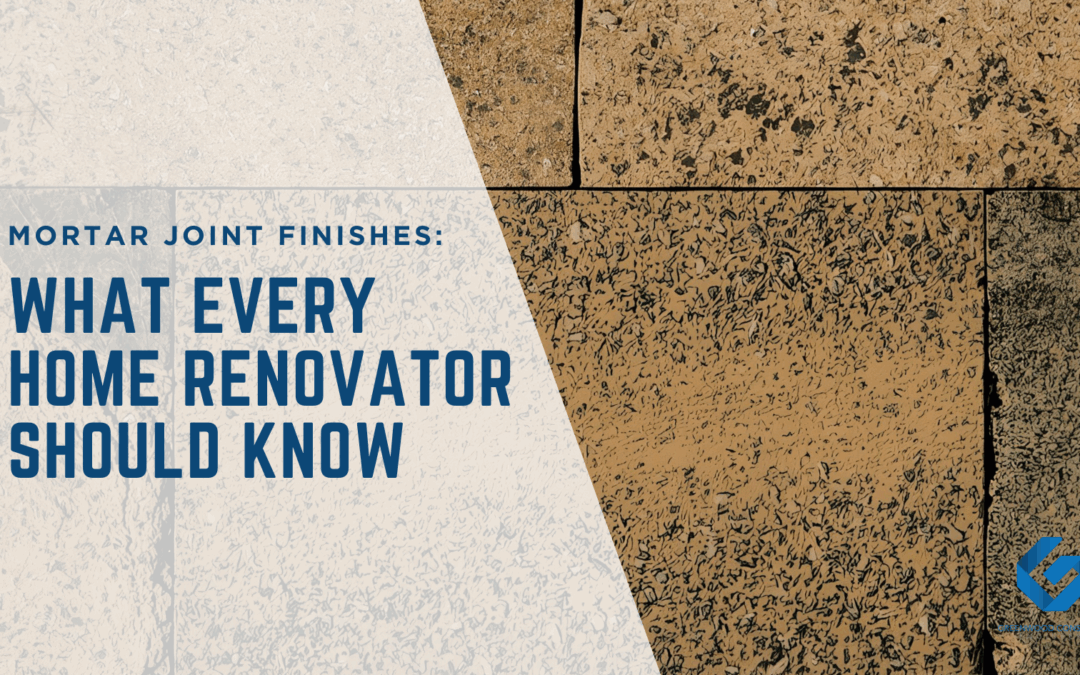When planning brickwork for a renovation or new build, many homeowners focus on brick colour, size, or pattern. But there’s another detail that plays a big role in both performance and appearance – the mortar joint finish.
The way mortar is tooled after bricks are laid influences durability, moisture resistance, and overall style. From sleek modern lines to heritage character, your choice of finish matters.
In this guide, we’ll explore the five most common mortar joint finishes used in Australian homes – Concave, Weathered, Beaded, Raked, and Vee Joint — and weigh up their strengths, weaknesses, and best applications.
1. Concave Joint – Durable and Timeless
-
Appearance: A smooth, rounded groove pressed into the mortar.
-
Best For: External walls, exposed facades.
-
Why Renovators Like It: Concave joints are neat, strong, and weather-resistant. The tooling compresses the mortar, creating a tight seal against rain and minimising cracks. If you’re renovating in high-rainfall or coastal areas, this is often the most durable choice.
2. Weathered Joint – Designed to Shed Water
-
Appearance: Mortar slopes outwards, angled down from the brick edge.
-
Best For: External walls where moisture resistance is a priority.
-
Why Renovators Like It: The sloping profile naturally deflects rainwater, helping prevent staining and dampness. It’s a practical choice for heritage homes and areas exposed to heavy rain. Skilled tooling is key to keeping the slope consistent.
3. Beaded Joint – Character with a Drawback
-
Appearance: A raised ridge or “bead” along the centre of the joint.
-
Best For: Decorative internal walls or sheltered facades.
-
Why Renovators Like It: Beaded joints add shadow lines and texture, enhancing heritage charm and feature walls. However, the raised profile makes them more vulnerable to weathering, so they’re best used sparingly in exposed areas.
4. Raked Joint – Highlighting the Brickwork
-
Appearance: Mortar cut back 2–5 mm behind the face of the brick.
-
Best For: Contemporary facades and feature walls.
-
Why Renovators Like It: The recessed finish emphasises brick patterns with bold shadow lines, giving a sharp, modern look. The trade-off is reduced weather resistance, as recessed mortar exposes brick edges to moisture. Best suited for premium face bricks and walls with good maintenance.
5. Vee Joint – Sharp and Decorative
-
Appearance: A V-shaped groove cut into the mortar.
-
Best For: Internal and external walls, depending on style.
-
Why Renovators Like It: Vee joints combine strength with crisp lines. Like concave joints, they compress the mortar for added durability but deliver a sharper, decorative style. A versatile option for both modern and traditional homes.
Mortar Joint Finishes – Quick Comparison Guide
| Joint Type | Appearance | Weather Resistance | Aesthetics / Style | Maintenance | Best Use |
|---|---|---|---|---|---|
| Concave | Smooth, rounded groove | ★★★★☆ Excellent – highly resistant to rain and cracking | Timeless, neat finish | Low | External facades, long-term durability |
| Weathered | Sloping profile, angled out | ★★★★☆ Excellent – sheds water effectively | Traditional, subtle | Low | Heritage homes, exposed external walls |
| Beaded | Raised central ridge | ★★☆☆☆ Poor – ridge vulnerable to weathering | Strong character, textured | High | Feature/internal walls, sheltered facades |
| Raked | Mortar recessed behind brick face | ★★☆☆☆ Fair – exposes brick edges to moisture | Modern, emphasises pattern | Moderate–High | Contemporary facades, feature walls |
| Vee Joint | Sharp V-shaped groove | ★★★☆☆ Good – compresses surface but less than concave | Crisp, decorative | Moderate | Both internal and external walls needing sharp lines |
Which Joint Should You Choose?
For most renovation projects, the choice comes down to balancing style and durability:
-
Best Weather Resistance: Concave or Weathered.
-
Best for Modern Looks: Raked or Vee Joint.
-
Best for Heritage Charm: Beaded (but only in sheltered spots).
If you’re working on a heritage restoration, you may need to match the original joint finish. For coastal and high-rainfall areas like the Northern Beaches, prioritise weather-resistant finishes (concave or weathered) for long-term protection

Practical Tips for Renovators
1. Inspect existing mortar – Past performance often indicates what works best in your home’s environment.
2. Match mortar colour – Finish and colour together determine the final look.
3. Hire skilled tradespeople – Poor tooling weakens joints and reduces weather resistance.
4. Think long-term – Decorative finishes like raked and beaded look striking but may need extra maintenance.
Conclusion
Mortar joints may seem like a small design detail, but they make a big difference in both appearance and durability. Choosing the right finish helps protect your home while achieving the style you want.
For most coastal or exposed locations, concave and weathered joints offer the best long-term performance. For feature walls and modern builds, raked and vee joints can provide a bold aesthetic. And for character homes, beaded joints can bring heritage charm – just be mindful of their higher maintenance needs.
If you’re planning a renovation or rebuild in the Northern Beaches or greater Sydney, our team at Greenwood Engineering can help guide you toward the best choices for your project.
👉 Ready to plan your renovation? Contact us!
Contact Greenwood Consulting Engineers today to discuss your site and project needs.

